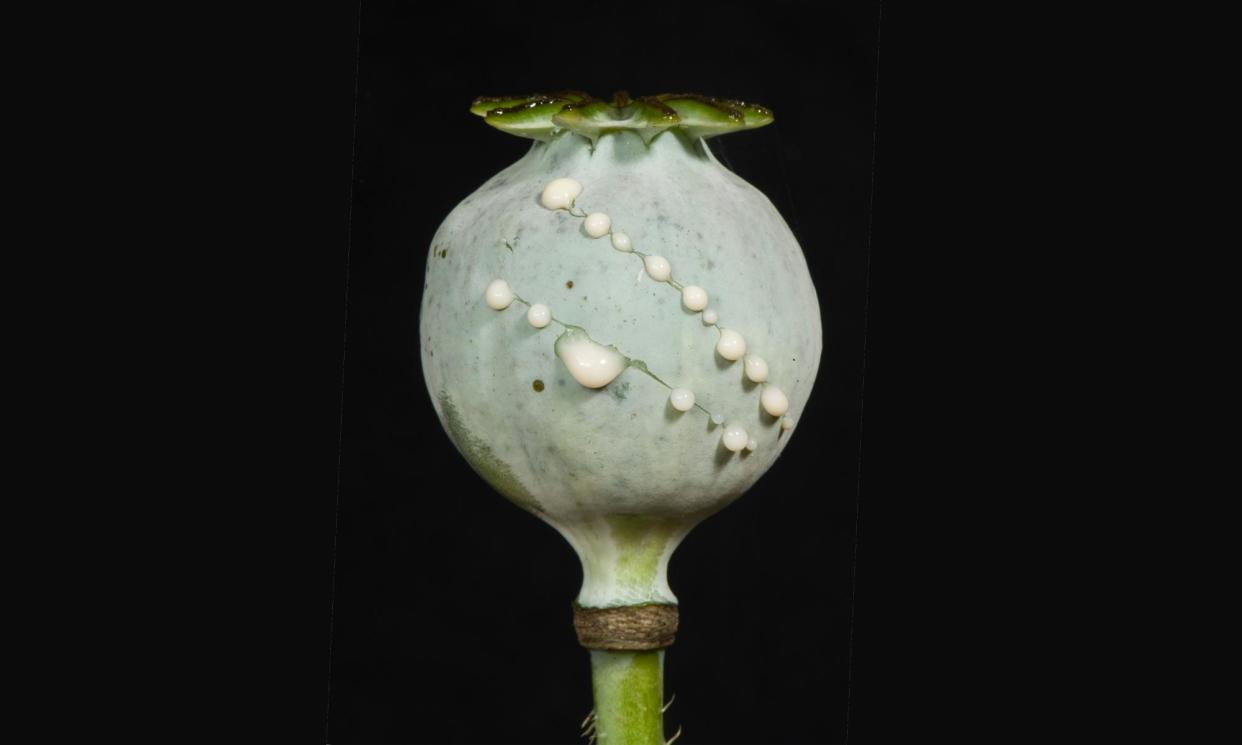Jump in opium imports suggests the ancient drug’s possible comeback in Australia

One of Australia’s emerging niche drugs in 2023 happens to be one of the country’s oldest.
About 180 years after opium was first imported into the country, the Australian federal police seized more than double the amount of the drug this year than in 2022. It is also almost six times the amount seized in 2021.
And the AFP is unable to rule out whether users are frequenting modern opium dens to buy and consume it.
“Given [what] we know historically about the drug, that absolutely could be what’s happening,” said Paula Hudson, the AFP’s acting assistant commissioner.
“I don’t have anything … that actually shows that. It’s a bit of an information gap in that picture.”
Related: Out of our minds: opium’s part in imperial history
Court records show that some users have longstanding addictions, which in some cases were linked to the consumption of the drug for medicinal purposes, as has occurred for centuries in some parts of the world.
But Hudson said it was not helpful for law enforcement to focus on stereotypes or users who historically consumed opium when considering its current market.
“Opium for me brings up those nostalgic thoughts back in the 18th century of opium dens and that sort of thing,” Hudson said.
“[But it] would be remiss of law enforcement to focus in on particular sectors – that’s just the history part of it.”
Hudson said it was possible that those importing opium were not overly concerned about the end market for the drug.
There is a glut of many illicit drugs worldwide, Hudson said, meaning that organised crime syndicates are increasingly importing whatever they can and finding a buyer after it arrives in Australia. This flips the way the illicit drug market typically operates.
“Criminal groups, they don’t care what the commodity is,” Hudson said. “They’re purely in it to make money and to reap financial gain and benefit out of people’s human suffering.”
Opium production in Myanmar was also greater than at any time for more than two decades, according to a December report from the UN Office on Drugs and Crime (UNODC).
Related: Opium contaminated with lead poisons two in Melbourne and leaves hospitals on alert
Myanmar and Afghanistan are the source countries for most of the opium found in Australia.
“Opium poppy cultivation in southeast Asia is closely linked to poverty, lack of government services, challenging macroeconomic environments, instability, and insecurity,” the UNODC found.
“Against the background of continued disruptions to social, political, and economic stability following the military takeover in early 2021, Myanmar’s economy faced a series of external and domestic shocks in 2021 and 2022.
“Worsening stability and security since then have coincided with greater levels of poppy cultivation and opium production.”
Hudson said opium can be particularly difficult to detect, given it is an organic substance that can be impregnated into a range of other items.
The AFP seized 155kg of opium from more than 125 attempted imports via air, parcel and sea cargo this year.
It believes “criminal groups” in Australia use connections in the UK, India and Pakistan to source the drug.
In July, two men were charged with facilitating the importation of opium into Australia from Iran after the AFP allegedly found 23 opium-impregnated mats in a storage facility in Melbourne’s north.
In Australia, the National Alcohol and Other Drug Hotline is at 1800 250 015; families and friends can seek help at Family Drug Support Australia at 1300 368 186. In the UK, Action on Addiction is available on 0300 330 0659. In the US, call or text SAMHSA’s National Helpline at 988


